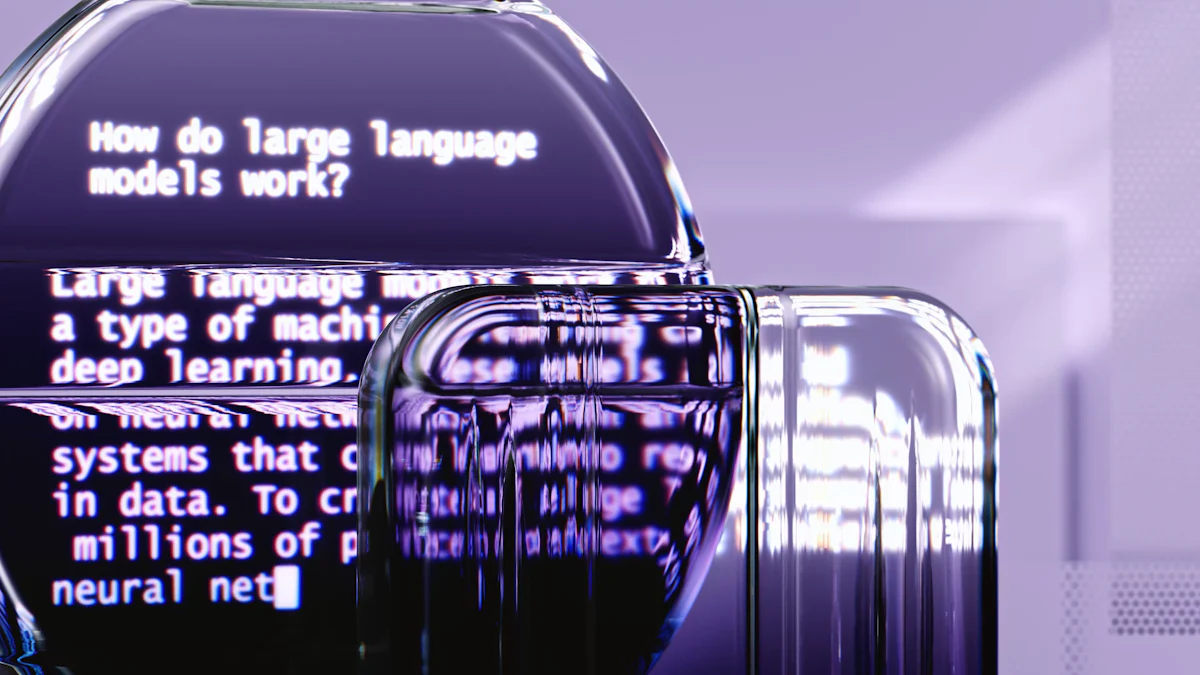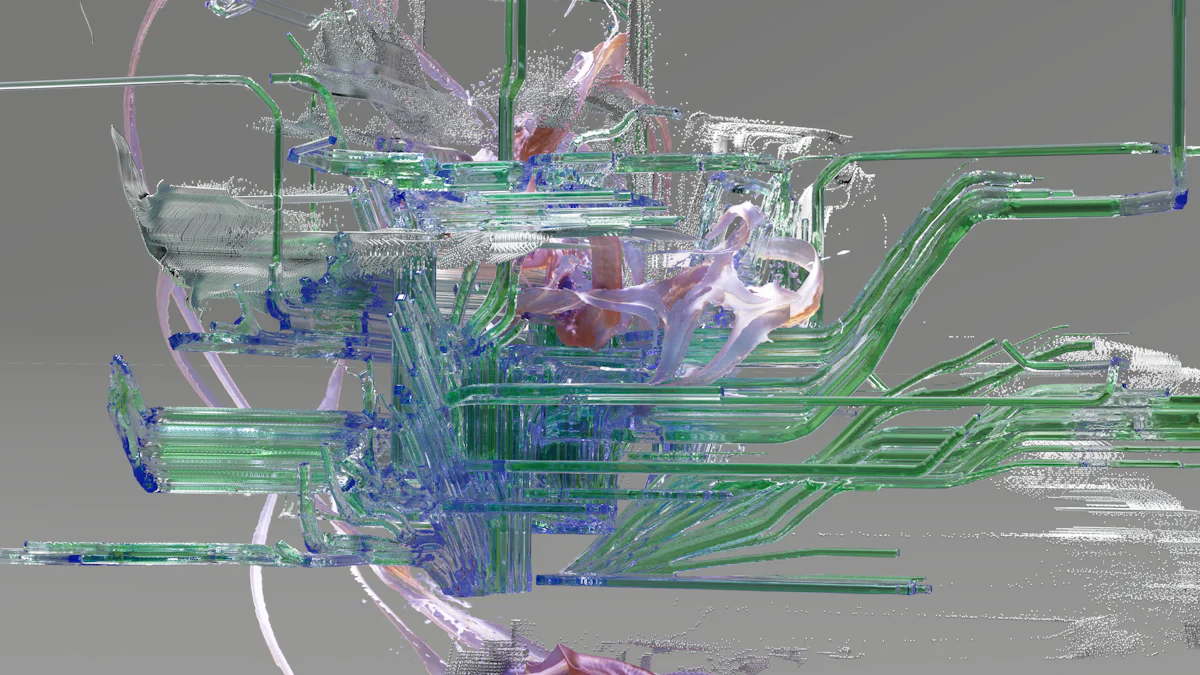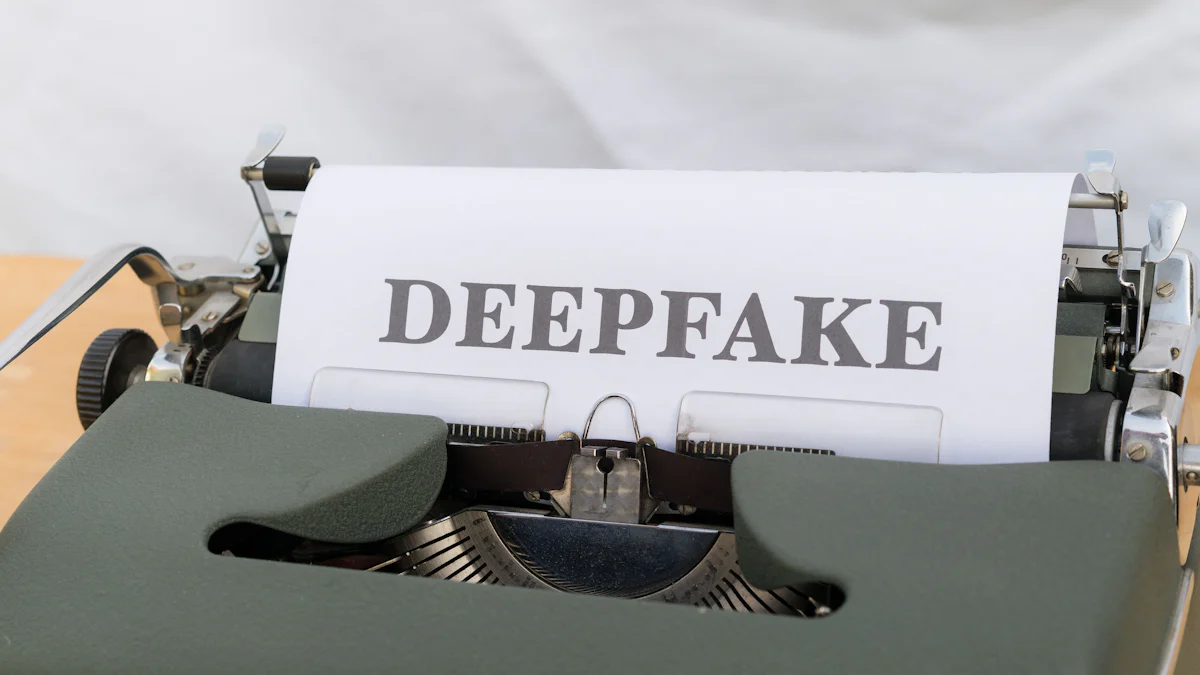How AI Image Generation Works: A Scientific Perspective

AI Image Generation has revolutionized how we create visuals. You might wonder how machines can produce images from mere text prompts. This technology relies on advanced algorithms and neural networks to interpret and generate high-quality visuals. Understanding the scientific principles behind this process is crucial. It helps you appreciate the technology's potential and its impact on various industries. With over 15 million images generated since 2022, AI image generation continues to grow rapidly, offering exciting possibilities for art, marketing, and beyond.
Understanding AI Image Generation
Definition and Basic Concepts
What is AI Image Generation?
AI Image Generation refers to the process where machines create images from text descriptions or prompts. This technology uses machine learning models and neural networks to analyze vast amounts of data. By understanding patterns and relationships within this data, AI can produce new and unique images. You might find it fascinating that AI Image Generation can interpret simple text prompts and transform them into detailed visuals. This capability opens up endless possibilities in fields like art, marketing, and scientific visualization.
Key Terminologies
To grasp AI Image Generation, you need to familiarize yourself with some key terms:
Machine Learning: A subset of AI that enables systems to learn and improve from experience without being explicitly programmed.
Neural Networks: Computational models inspired by the human brain, crucial for recognizing patterns and making decisions.
Generative Models: Algorithms that generate new data instances resembling the training data.
Generative Adversarial Networks (GANs): A class of machine learning frameworks where two neural networks contest with each other to produce more accurate outputs.
Understanding these terms will help you appreciate how AI Image Generation works and its potential impact on various industries.
Historical Background
Evolution of AI in Image Processing
AI Image Generation has undergone significant transformations over the years. Initially, generative models were used in statistics for decades. However, the real breakthrough came in 2014 when Ian Goodfellow introduced Generative Adversarial Networks (GANs). This invention marked a turning point, allowing AI to produce high-quality images by learning from vast datasets. You can see how AI has evolved from simple image processing tasks to creating complex visuals that rival human creativity.
Milestones in AI Image Generation
Several milestones have shaped the journey of AI Image Generation:
Introduction of GANs in 2014: This innovation laid the foundation for modern AI image-making techniques.
Advancements in Neural Networks: Improved algorithms and increased computational power have enhanced the quality and realism of AI-generated images.
Integration with Other Technologies: AI has been instrumental in powering innovations such as self-driving cars and behavioral pattern analysis, further boosting its capabilities in image generation.
These milestones highlight the rapid progress and growing notoriety of AI Image Generation. As you explore this field, you'll discover how these advancements continue to push the boundaries of what's possible.
Core Technologies Behind AI Image Generation
Machine Learning and Deep Learning
Role of Neural Networks
Neural networks play a pivotal role in AI Image Generation. These networks mimic the human brain's structure, allowing machines to recognize patterns and make decisions. You can think of them as a series of interconnected nodes, each processing information and passing it on to the next. This process enables the system to learn from data and improve over time. In AI Image Generation, neural networks analyze vast datasets to understand the intricacies of images. They identify patterns and relationships, which helps in creating new visuals that are both unique and realistic.
Training Models for Image Generation
Training models for AI Image Generation involves feeding the neural networks with large amounts of data. You provide the system with images and their corresponding descriptions. The model learns to associate specific features with certain text prompts. This training process is crucial because it determines the quality and accuracy of the generated images. Researchers have made significant progress in this area, using techniques like style transfer and convolutional neural networks (CNNs) to enhance image generation capabilities. By continuously refining these models, AI can produce visuals that closely resemble real-world images.
Generative Adversarial Networks (GANs)
How GANs Work
Generative Adversarial Networks, or GANs, represent a breakthrough in AI Image Generation. Introduced by Ian Goodfellow in 2014, GANs consist of two neural networks: the generator and the discriminator. The generator creates images, while the discriminator evaluates them. You can imagine this as a game where the generator tries to produce images that can fool the discriminator into thinking they are real. Over time, both networks improve, resulting in highly realistic images. This adversarial process allows GANs to generate visuals that are often indistinguishable from those created by humans.
Applications of GANs in Image Generation
GANs have numerous applications in AI Image Generation. In the creative industry, artists use GANs to explore new styles and create innovative artworks. You might have seen GAN-generated art pieces that push the boundaries of traditional art forms. In business, companies utilize GANs for product visualization and advertising campaigns. By generating realistic images, businesses can showcase products in various settings without the need for costly photoshoots. GANs also play a role in scientific visualization, helping researchers create detailed images for analysis and presentation.
The Process of AI Image Generation

Data Collection and Preparation
Importance of Quality Data
In AI Image Generation, the quality of data you use is paramount. High-quality data ensures that the models learn accurately and produce realistic images. When you provide the system with clear and detailed images, it can better understand the nuances and intricacies of visual elements. This understanding leads to more precise image generation. Poor-quality data, on the other hand, can result in blurry or unrealistic outputs. Therefore, selecting the right data is the first step in creating effective AI Image Generation models.
Data Preprocessing Techniques
Before feeding data into AI models, you must preprocess it. This step involves several techniques that enhance the data's suitability for training. Common methods include:
Normalization: Adjusting the data to a common scale without distorting differences in the ranges of values.
Standardization: Transforming data to have a mean of zero and a standard deviation of one.
Feature Selection: Identifying and using only the most relevant features for model training.
Dimensionality Reduction: Reducing the number of random variables under consideration by obtaining a set of principal variables.
These techniques improve model generalization and reduce overfitting, ultimately enhancing the accuracy of AI Image Generation models.
Model Training and Optimization
Training Algorithms
Training algorithms form the backbone of AI Image Generation. You use these algorithms to teach the model how to interpret and generate images. The process involves feeding the model with vast amounts of data and allowing it to learn patterns and relationships. Popular algorithms include Convolutional Neural Networks (CNNs), which excel at recognizing spatial hierarchies in images. By employing these algorithms, you enable the model to generate images that are both unique and realistic.
Techniques for Model Optimization
Once you train the model, optimization becomes crucial. Optimization techniques ensure that the model performs efficiently and produces high-quality images. Some common methods include:
Hyperparameter Tuning: Adjusting the parameters that govern the learning process to improve model performance.
Regularization: Adding a penalty to the loss function to prevent overfitting.
Batch Normalization: Normalizing the inputs of each layer to stabilize the learning process.
By applying these techniques, you can refine the model's capabilities, leading to more accurate and realistic AI Image Generation.
Practical Applications of AI Image Generation

AI Image Generation has found its way into various industries, transforming how you approach creativity and business operations. By leveraging this technology, you can enhance your creative projects and streamline business processes, leading to increased engagement and efficiency.
In the Creative Industry
Art and Design
In the realm of art and design, AI Image Generation opens up new avenues for creativity. You can use AI to explore innovative styles and create unique artworks that push the boundaries of traditional design. For instance, design agencies have integrated AI image generators into their workflows, reducing turnaround times by 75% and increasing client capacity. This efficiency allows you to focus more on the creative aspects of your projects, knowing that AI can handle repetitive tasks.
Film and Animation
AI Image Generation also plays a significant role in film and animation. You can utilize AI to generate realistic backgrounds and characters, saving time and resources in the production process. This technology enables you to experiment with different visual styles and effects, enhancing the storytelling experience. By automating certain aspects of animation, you can focus on crafting compelling narratives and engaging visuals.
In Business and Marketing
Advertising Campaigns
In the business world, AI Image Generation revolutionizes advertising campaigns. You can create high-quality visuals tailored to specific audiences, increasing engagement rates and brand visibility. For example, a publishing house implemented AI image generators and saw a 40% increase in reader engagement and a 20% rise in subscription renewals. By using AI-generated images, you can capture your audience's attention and convey your message more effectively.
Product Visualization
AI Image Generation proves invaluable in product visualization, especially in e-commerce. You can generate realistic images of products in various settings, allowing customers to visualize them better. An online retailer experienced a 30% increase in sales within the first month of implementing AI image generators. This technology enables you to showcase products without the need for costly photoshoots, providing a scalable solution for businesses looking to enhance their online presence.
Limitations and Challenges
AI Image Generation offers remarkable capabilities, yet it faces several limitations and challenges. Understanding these obstacles is crucial for anyone interested in the technology's development and application.
Technical Limitations
Quality and Realism Issues
When you use AI Image Generation, you might notice that not all images achieve the desired quality or realism. The technology often struggles with complex textures and intricate details. This limitation arises because AI models rely heavily on the data they are trained on. If the training data lacks diversity or quality, the generated images may appear unrealistic or flawed. You must ensure that the data used for training is comprehensive and high-quality to improve the output.
Computational Requirements
AI Image Generation demands significant computational power. Training models require advanced hardware and substantial energy resources. You might find this requirement challenging, especially if you lack access to high-performance computing systems. The computational intensity also raises concerns about the environmental impact of AI technologies. As a user, you should consider these factors when implementing AI Image Generation solutions.
Ethical and Social Concerns
Copyright and Ownership
The rise of AI Image Generation brings forth ethical dilemmas regarding copyright and ownership. When AI creates an image, determining who owns the rights becomes complex. You must navigate these legal waters carefully, as current frameworks often do not address AI-generated content adequately. The potential for copyright infringement and plagiarism looms large, especially when AI uses large datasets without verifying the originality of images.
Misuse and Deepfakes
AI Image Generation can also lead to misuse, particularly in the creation of deepfakes. These are manipulated images or videos that can deceive viewers by presenting false realities. You should be aware of the ethical implications and potential harm caused by deepfakes. They pose cybersecurity threats and can damage reputations or spread misinformation. Addressing these concerns requires robust ethical reasoning and regulatory measures to prevent misuse.
"The ethical challenges posed by AI art include risks to human artists, offensive or harmful content, and biases in generated content."
Controversies Surrounding AI Image Generation
Debates on Creativity and Originality
AI vs Human Creativity
AI Image Generation sparks debates about creativity. You might wonder if AI can truly create art or if it merely mimics human creativity. AI uses algorithms to analyze patterns in existing artworks, generating new images based on these patterns. Some argue that this process lacks the emotional depth and originality found in human-created art. Others believe AI offers a new form of creativity, blending technology with artistic expression. This debate challenges you to reconsider what defines creativity and whether machines can possess it.
Impact on Artists and Designers
The rise of AI Image Generation impacts artists and designers significantly. You may find that AI tools streamline creative processes, allowing for faster production and experimentation. However, this technology also raises concerns about job displacement. Artists worry that AI-generated art could devalue their work or replace them entirely. The ethical challenges posed by AI art include risks to human artists, offensive or harmful content, and biases in generated content. As an artist or designer, you must navigate these changes, balancing the benefits of AI with the preservation of human artistry.
Legal and Regulatory Issues
Current Legal Frameworks
Legal frameworks struggle to keep pace with AI advancements. You might face challenges in determining copyright ownership of AI-generated images. Current laws often do not address AI-generated content adequately, leaving creators in a legal gray area. Courts are working to establish how intellectual property laws should apply to generative AI. This uncertainty complicates the protection of your creative rights and raises questions about who owns the output of AI systems.
Future Regulatory Considerations
Future regulations must address the complexities of AI Image Generation. You should expect reforms that include clearer copyright guidelines and stricter data privacy laws. These changes aim to balance innovation with ethical responsibility. Companies using generative AI need to ensure compliance with the law and mitigate risks. As AI continues to evolve, you must stay informed about regulatory developments to protect your interests and navigate the legal landscape effectively.
Future of AI Image Generation
Emerging Trends and Innovations
Advances in Technology
AI Image Generation continues to evolve with remarkable technological advancements. You will notice improvements in neural network architectures, which enhance the quality and realism of generated images. Researchers are developing more efficient algorithms that require less computational power, making AI Image Generation accessible to a broader audience. These advancements allow you to create high-quality visuals faster and with greater accuracy. As technology progresses, expect AI systems to generate images that are increasingly indistinguishable from those created by humans.
New Applications and Use Cases
The future holds exciting new applications for AI Image Generation. You can anticipate its integration into virtual reality (VR) and augmented reality (AR) environments, where AI-generated images enhance immersive experiences. In education, AI can create interactive visual aids that simplify complex concepts for students. The healthcare industry may also benefit, as AI-generated images assist in medical imaging and diagnostics. These new use cases demonstrate the versatility of AI Image Generation and its potential to transform various fields.
Long-term Implications
Impact on Industries
AI Image Generation will significantly impact industries across the board. In the creative sector, you will see a shift in how art and design projects are approached, with AI serving as a powerful tool for innovation. Businesses will leverage AI-generated visuals to improve marketing strategies and product presentations. The technology will streamline processes, reduce costs, and increase efficiency. As AI Image Generation becomes more prevalent, industries must adapt to these changes to remain competitive.
Societal Changes
The widespread adoption of AI Image Generation will bring about societal changes. You may observe shifts in employment patterns, as AI takes on tasks traditionally performed by humans. This change could lead to new job opportunities in AI development and management. Society will need to address ethical concerns, such as the potential for misuse and the impact on human creativity. As AI Image Generation becomes more integrated into daily life, you must consider its implications and work towards a future where technology and humanity coexist harmoniously.
In this exploration of AI image generation, you have learned about its core technologies, practical applications, and the challenges it faces. AI image generation democratizes creativity, allowing individuals of all skill levels to express themselves. It offers cost benefits by reducing expenses on traditional services. As AI tools advance, they promise to revolutionize digital art and design, making them more accessible. Continued research and development will drive these innovations forward. You can expect AI-generated images to become even more realistic and versatile, opening new avenues for creativity and industry applications.
See Also
Decoding the Math Behind Generative AI Functionality
Insight into Art Creation with AI Technology
Unveiling the Mechanism of Text-to-Image AI Solutions
